- Details

Embark on an adventure of a lifetime with an Oasis Overland tour through Egypt. From the towering pyramids of Giza to the mesmerizing temples of Luxor, you will witness the ancient wonders of this historical and captivating country. Explore bustling bazaars, cruise down the iconic Nile River, and marvel at the intricate hieroglyphics of the Valley of the Kings. Experience the vibrant culture of Egypt as you mingle with locals in bustling markets and dine on traditional Egyptian cuisine. Visit the stunning cities of Cairo, Aswan, and Alexandria, each with its own unique charm and history. With knowledgeable guides leading the way, you will gain a deeper understanding of Egypt's rich past and vibrant present. Join us on an Oasis Overland tour and immerse yourself in the magic of Egypt.
Ancient Egypt: Unveiling the Mysteries of the Past
Pyramids of Giza
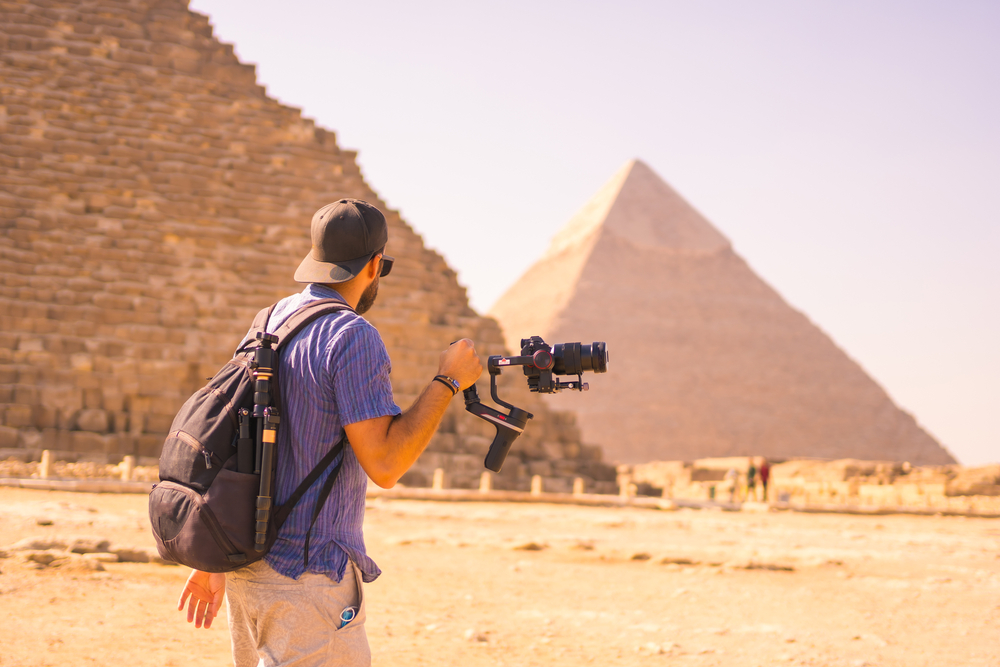
The Pyramids of Giza, located on the outskirts of Cairo, Egypt, are one of the most iconic and recognizable ancient structures in the world. Dating back to around 2500 BC, these massive structures were built as majestic tombs for the Pharaohs of the Fourth Dynasty. The Great Pyramid of Giza is the largest and most famous of the three pyramids, standing at a height of over 450 feet. It is made up of over 2 million limestone blocks, each weighing several tons. The Pyramids of Giza continue to fascinate archaeologists, historians, and tourists alike, with their impressive architecture and mysterious construction methods. These ancient wonders stand as a testament to the advanced engineering skills and cultural achievements of the ancient Egyptians. Visit the Pyramids of Giza to marvel at their grandeur and immerse yourself in the rich history of this ancient civilization.
The Nile River
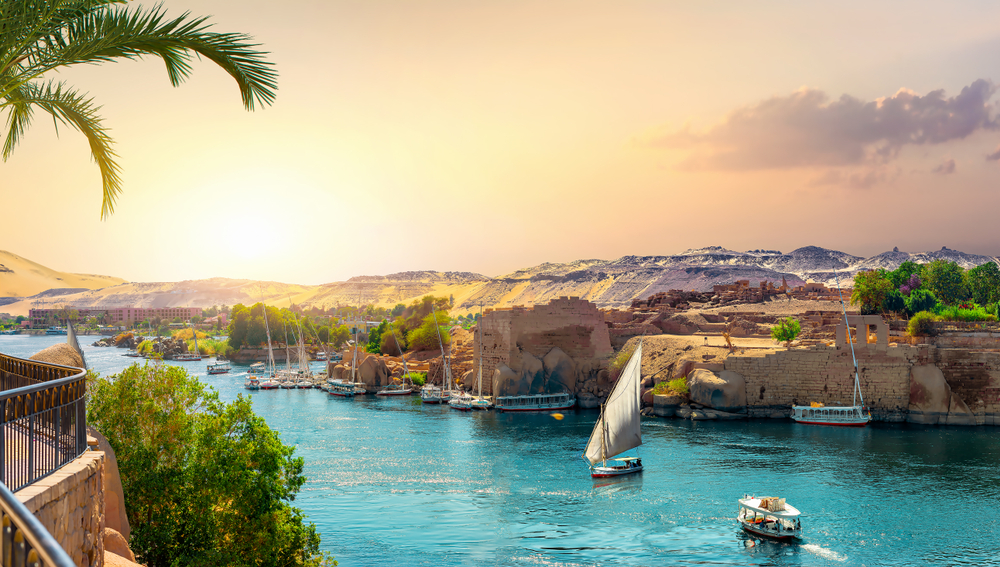
The Nile River is one of the most iconic and historic rivers in the world, flowing through northeastern Africa for over 4,000 miles. It is often referred to as the longest river in the world, with its two main tributaries, the White Nile and the Blue Nile, converging in Sudan before flowing through Egypt and into the Mediterranean Sea.
The Nile River has played a crucial role in the development of ancient civilizations, including the Ancient Egyptians who relied on its annual floods for agriculture and transportation. Today, the river continues to be a vital resource for the people living along its banks, providing water for irrigation, hydroelectric power, and transportation.
Its rich history, diverse ecosystem, and cultural significance make the Nile River a popular destination for tourists, who can explore its ancient temples, wildlife reserves, and bustling cities along its shores. Whether cruising along its waters or visiting its historic sites, the Nile River offers a unique and unforgettable experience for travelers seeking to explore the heart of Africa.
The Valley of the Kings
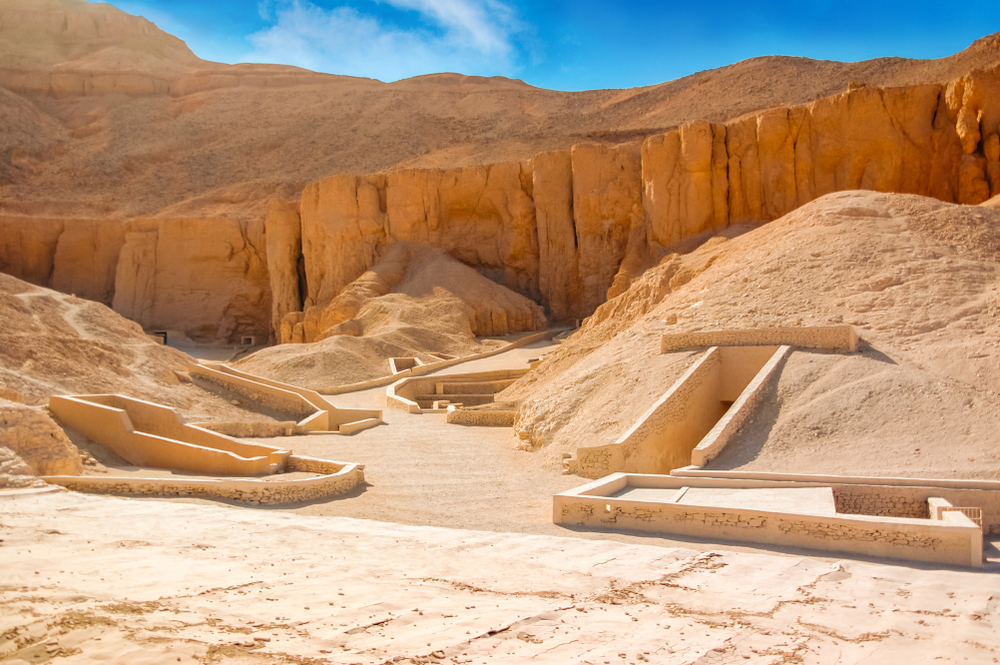
The Valley of the Kings is an ancient burial ground located on the west bank of the Nile River in Egypt. It served as the final resting place for pharaohs, queens, and other royalty during the New Kingdom period (1550-1070 BCE). The valley is famous for its elaborate tombs, many of which are beautifully decorated with intricate paintings and hieroglyphics.
The Valley of the Kings is renowned for the discovery of the tomb of King Tutankhamun in 1922 by archaeologist Howard Carter. This discovery garnered international attention and sparked a renewed interest in ancient Egyptian history and culture.
Today, the Valley of the Kings is a popular tourist destination, drawing millions of visitors each year who come to explore its fascinating tombs and learn about the rich history of the ancient Egyptian civilization.
Modern Egypt: A Glimpse into the Present
Cairo: The Bustling Capital City

Cairo, the bustling capital city of Egypt, is a vibrant metropolis that seamlessly blends ancient history with modern amenities. As one of the largest cities in Africa and the Middle East, Cairo is a cultural and economic hub with a rich tapestry of historical sites, museums, bustling markets, and thriving nightlife. The city is home to iconic landmarks such as the Giza Pyramids, the Sphinx, and the Egyptian Museum, offering visitors a glimpse into the country's fascinating past. In addition to its historical significance, Cairo is also known for its bustling streets filled with colorful markets, street vendors, and lively cafes. Whether exploring the ancient ruins of the past or navigating the bustling city streets of today, Cairo offers a unique and unforgettable experience for travelers seeking to immerse themselves in the beauty and energy of this captivating city.
Khan el-Khalili
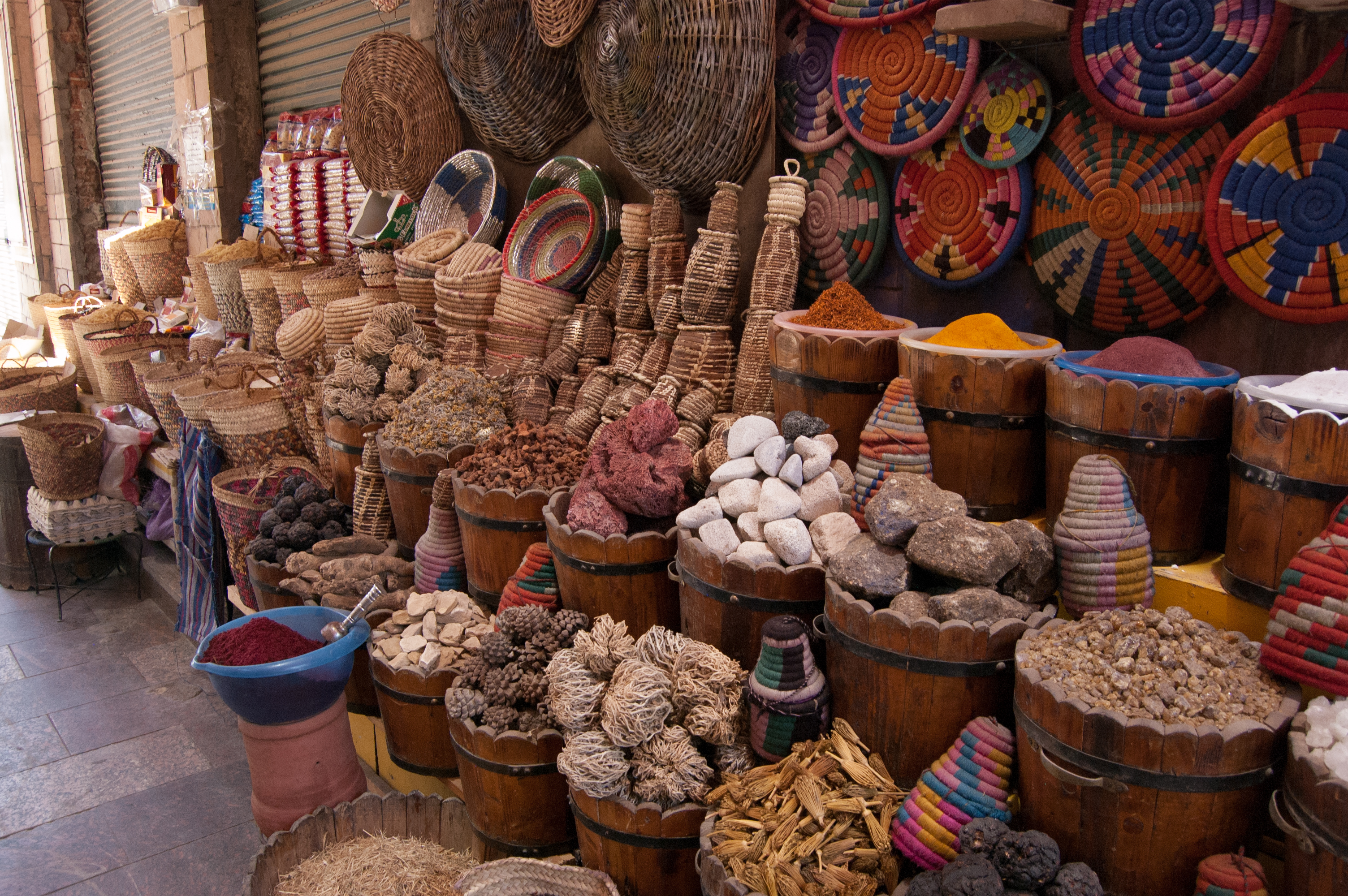
Khan el-Khalili is a historic marketplace located in the heart of Cairo, Egypt. Dating back to the 14th century, it is one of the largest and most famous souks in the Middle East, known for its bustling atmosphere, colorful shops, and wide range of traditional crafts and products. Here, visitors can explore a labyrinth of narrow alleyways lined with vendors selling everything from intricate handmade jewelry and textiles to spices, perfumes, and traditional Egyptian artifacts. Khan el-Khalili is not only a shopping destination, but also a cultural hub where locals and tourists alike gather to experience the vibrant energy of Cairo's old city. With its rich history and authentic charm, Khan el-Khalili offers a truly immersive and memorable shopping experience in the heart of Egypt's capital.
The Egyptian Museum in Cairo
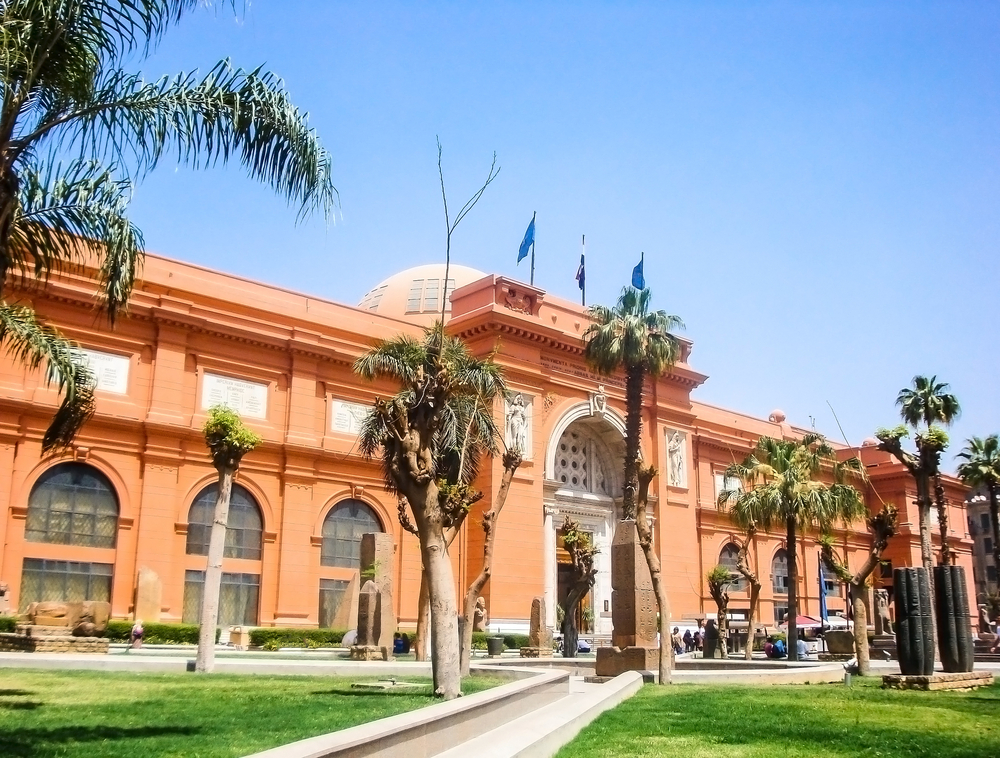
The Egyptian Museum in Cairo is a world-renowned institution that is home to an extensive collection of artifacts and antiquities from ancient Egypt. Located in Tahrir Square, the museum was established in 1902 and has since become a hub for Egyptology enthusiasts, historians, and tourists alike. With over 120,000 items on display, visitors can marvel at treasures such as the golden death mask of Tutankhamun, mummies, statues, jewelry, and more. The museum also offers insight into the rich history and culture of ancient Egypt through its interactive exhibits and displays. As one of the oldest and largest museums in the region, the Egyptian Museum in Cairo is a must-visit destination for anyone with an interest in the wonders of ancient Egyptian civilization.
Temples of Egypt
Luxor Temple
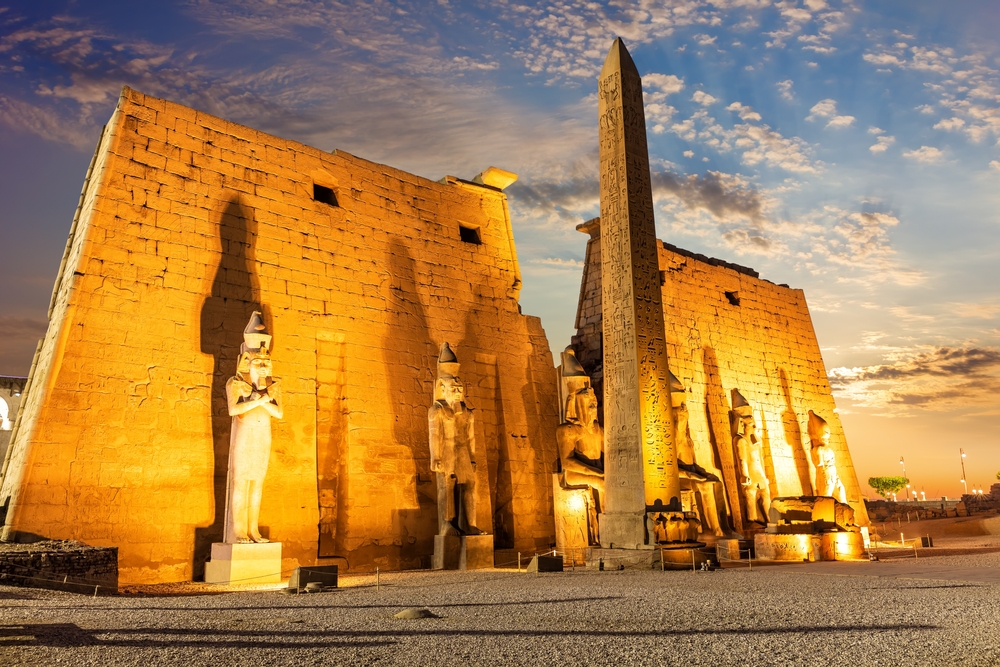
The temple is famous for its grand entrance, colossal statues, intricate hieroglyphics, and beautifully preserved obelisks. It also features a series of chapels, shrines, and sanctuaries, each with its own unique significance and purpose.
Visitors to Luxor Temple can immerse themselves in the splendor of ancient Egypt, marvel at the craftsmanship of the builders, and gain a deeper understanding of the religious beliefs and practices of the time. A visit to Luxor Temple is a must for anyone interested in history, archaeology, or simply experiencing the wonders of the ancient world.
Abu Simbel Temples
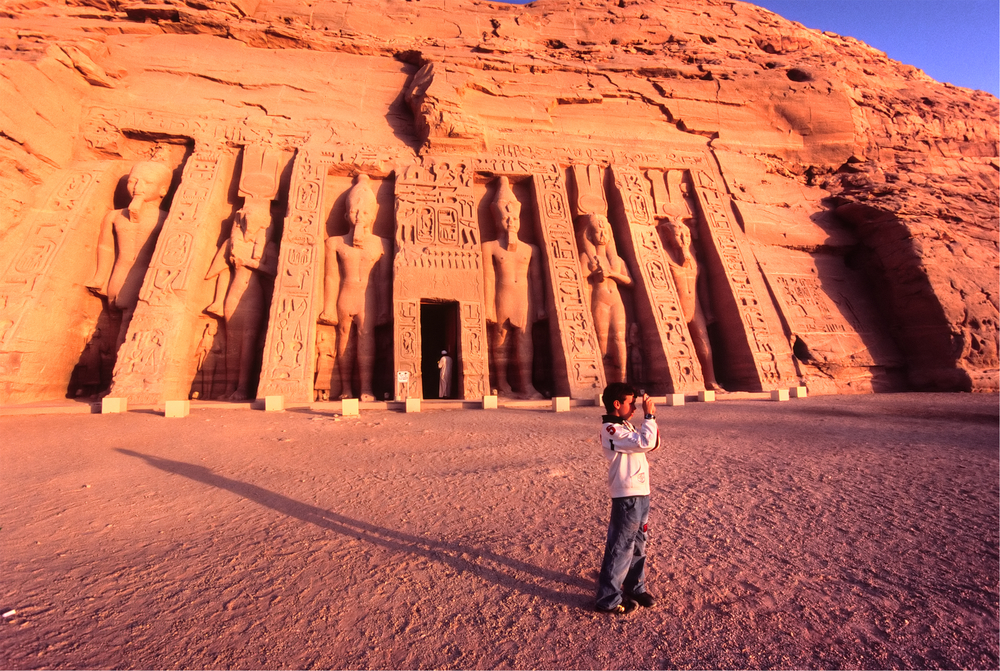
The temples were carved into the cliffside of the Nile River and were relocated in the 1960s to save them from being submerged by the creation of Lake Nasser. The main temple features four colossal statues of Ramesses II seated on his throne, while the smaller temple is dedicated to his chief wife, Queen Nefertari.
These temples are not only architectural marvels but also significant historical and cultural landmarks, offering insights into the grandeur of ancient Egyptian civilization. They continue to attract visitors from around the world who are amazed by their intricate carvings, massive statues, and the impressive engineering feat of their relocation.
Edfu Temple
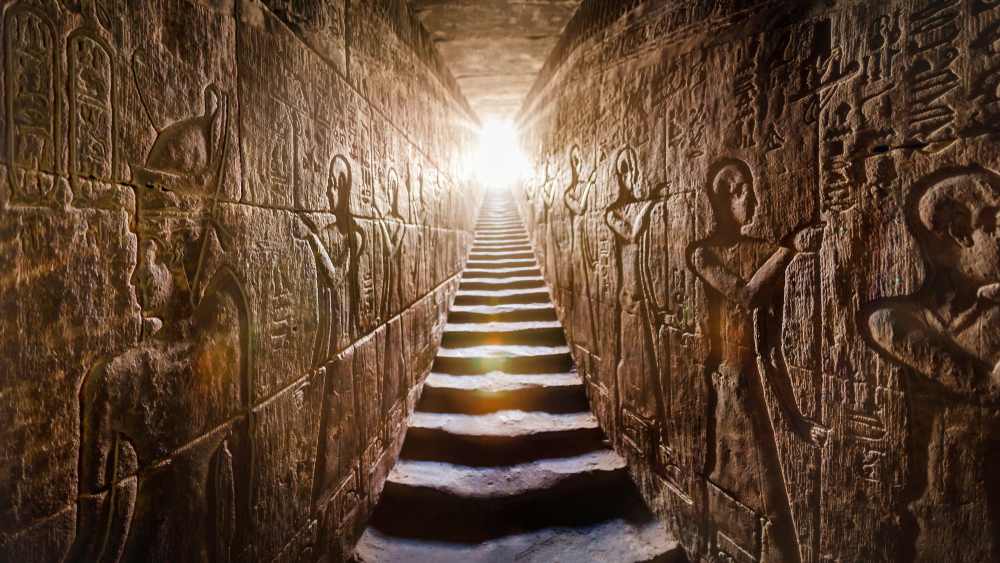
Edfu Temple, located in the city of Edfu in southern Egypt, is one of the best-preserved temples from ancient Egypt. Dedicated to the falcon-headed god Horus, this temple was built during the Ptolemaic dynasty between 237 and 57 BC. The impressive structure is known for its intricate carvings, hieroglyphics, and statues that provide a glimpse into the religious beliefs and practices of the ancient Egyptians.
Visitors can explore the great courtyard, hypostyle hall, sanctuary, and other chambers within the temple complex. The towering pylons and massive columns add to the grandeur of the site, making it a popular destination for tourists and historians alike. Edfu Temple offers a unique opportunity to experience the architectural prowess and artistic skill of the ancient Egyptians in a well-preserved setting.
Karnak Temple
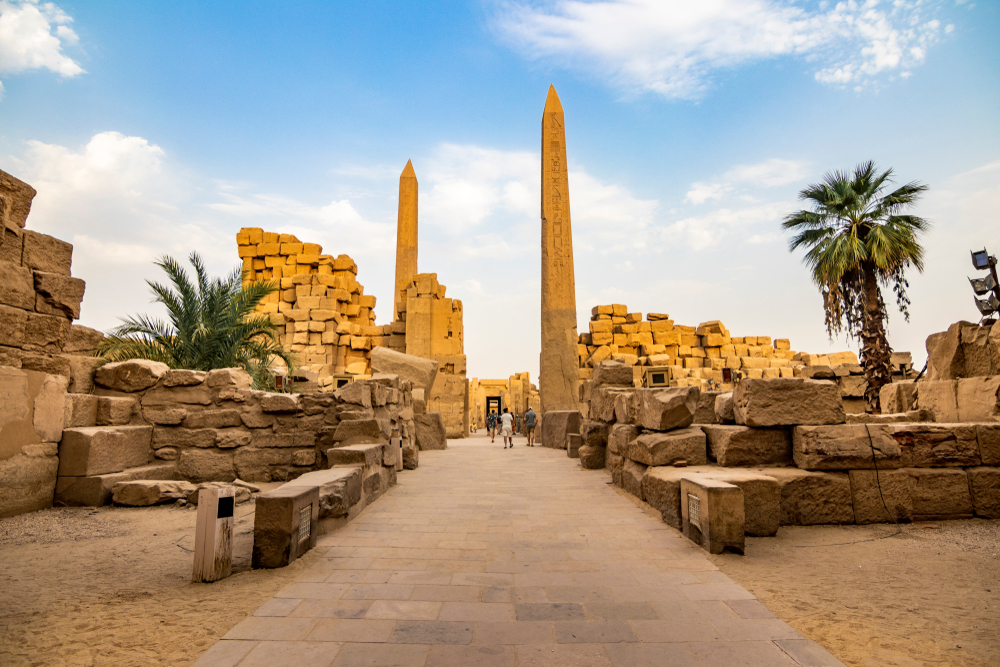
Karnak Temple is one of the largest religious complexes in the world, located in Luxor, Egypt. It is a vast open-air museum that showcases the impressive ancient Egyptian architecture and religious beliefs. The temple complex is dedicated to the god Amun, his wife Mut, and their son Khonsu.
Visitors to Karnak Temple can explore a variety of temples, chapels, pylons, and other structures that were added over a period of 2,000 years by various pharaohs and rulers. The most famous feature of the temple is the Great Hypostyle Hall, with its towering columns adorned with intricate hieroglyphics and carvings.
Karnak Temple is a must-visit for history enthusiasts and anyone interested in ancient Egyptian culture. It provides a fascinating glimpse into the religious practices and architectural achievements of this ancient civilization.
Mortuary Temple of Hatshepsut
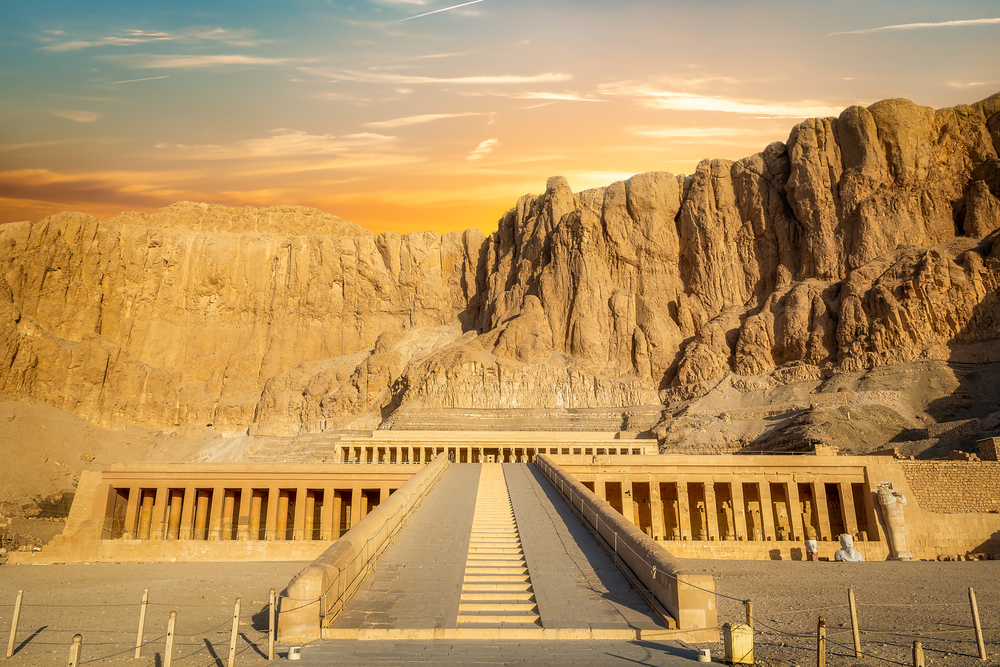
Visitors to the Mortuary Temple of Hatshepsut can explore its intricately carved reliefs depicting scenes from the queen's life and achievements, as well as marvel at the grandeur of its architecture. This UNESCO World Heritage site offers a fascinating glimpse into the history and beliefs of ancient Egypt, making it a must-visit destination for history enthusiasts and tourists alike.
Oasis Overland Tours in Egypt
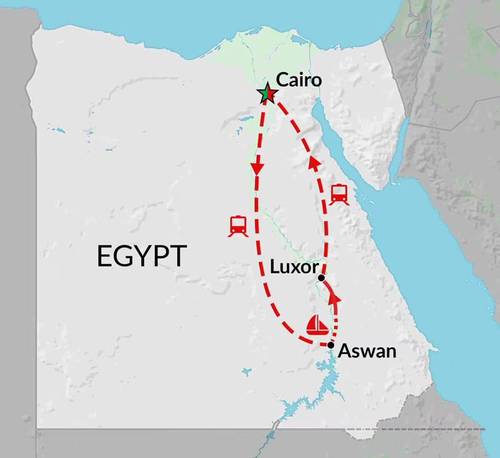
CAIRO TO CAIRO (9 DAYS) NILE FAMILY ADVENTURE
This compact tour of Egypt is perfectly suited for families and children wanting a more active adventure. It combines a tour of the iconic Pyramids & Sphinx, the sprawling Egyptian Museum and ancient Pharaonic temples & tombs with some more active adventure such as a fun camel ride and a cruise on a traditional felucca sailboat. Our handpicked guides have great skills and experience guiding families with children, and we keep our group sizes small to ensure you get the most out of what we are sure will be a holiday of a lifetime.
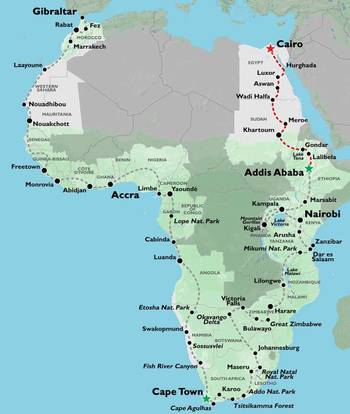
ADDIS ABABA TO CAIRO (38 DAYS) NILE TRANS
This expedition through the historically and culturally rich, and geographically diverse countries of Ethiopia, Sudan and Egypt takes you from the Ethiopian highlands (Africa's largest mountain range), to the deserts of Sudan and the coral reefs of the Red Sea. Ethiopia, itself has more UNESCO World Heritage sites than any other African country and Egypt needs very little introduction to its unique historical sites. This trip takes in major exotic-sounding cities, like Khartoum and gets well off the beaten track in between.
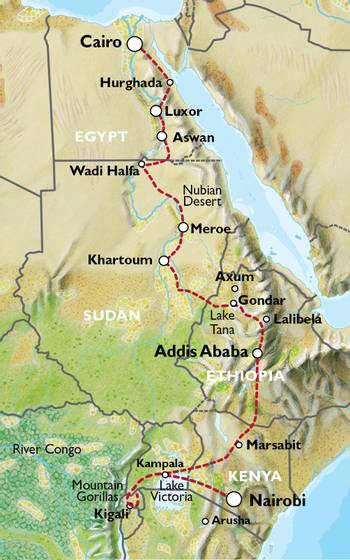
CAIRO TO NAIROBI (64 DAYS) NILE TRANS
This is an expedition through the heart of Africa from days of old. From crossing deserts, rivers and mountains and overcoming a multitude of challenges this continent can throw at you, inter-twined with stunning National Parks, some of the best adventure activity play grounds in the world, this is a trip that will linger in the memory long after you finish.

CAPE TOWN TO CAIRO VIA JOHANNESBURG (18 WEEKS) NILE TRANS
The words 'Cairo to Cape Town' conjure up images of African expeditions from days of old. Even today there are a multitude of challenges that this vast continent can throw at you. Desert, river, & mountain crossings are inter-twined with stunning National Parks & some of the best adrenaline fuelled activities & playgrounds in the world. This is a trip that will linger in your memory long after completion.
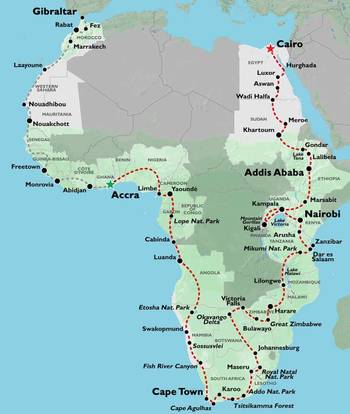
ACCRA TO CAIRO (31 WEEKS) TRANS AFRICA
Travelling from Ghana we cross through Central Africa, along routes rarely travelled by the average tourist and immerse ourselves in a culture few get to experience. Cape Town brings us back to 'western' civilisation before we head north to vibrant Cairo, experiencing some amazing adventure activities along the way and some of the best known gameparks East Africa has to offer.
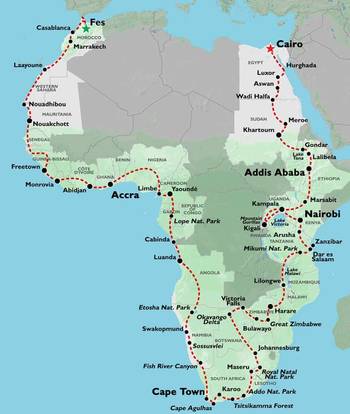
FES TO CAIRO (42 WEEKS) TRANS AFRICA
This epic expedition through Africa encompasses all the incredible landscapes, culture & wildlife you could imagine. From the harshness of the Sahara desert, the dense jungles of central Africa and the amazing wildlife of East Africa, the varied landscapes and cultures that make up this continent will leave an indelible mark on you forever. There will be times when it will be extremely tough - harsh terrains, bad roads and extremes of weather, but it will all be worth it! You will discover a continent most travellers only dream of - whilst having the experience of a lifetime!
